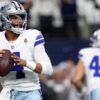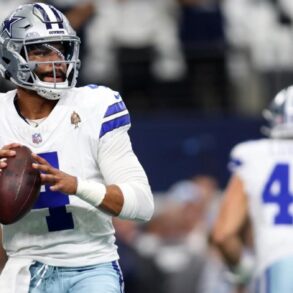One of the most dreaded periods of the NFL calendar arrived this week, bringing with it a new collection of scapegoats.
People around the NFL call the first day after the final regular-season games “Black Monday,” because that’s the day heads roll. Owners, frustrated by their teams’ lack of competitive results, give head coaches and/or general managers their pink slips and begin searching for ways to sell hope to angst-ridden fan bases.
Advertisement
In this year’s edition, New England Patriots owner Robert Kraft didn’t even sleep on his decision after the final game. He fired coach Jerod Mayo on Sunday, shortly after the rookie head coach guided the 4-13 Pats to victory over a Buffalo Bills team playing its second- and third-stringers. On Monday morning, the Jacksonville Jaguars fire coach Doug Pederson, a move that surprised no one. But then a day later, the Tennessee Titans fired general manager Ran Carthon after just two seasons, and the Las Vegas Raiders delivered a one-and-done firing of their own, sacking rookie head coach Antonio Pierce. A smattering of coordinator firings also occurred as the dust of the regular season settled. This all followed the in-season head coach firings of the Jets’ Robert Saleh, Saints’ Dennis Allen and Bears’ Matt Eberflus.
Pederson’s dismissal came after three seasons with Jacksonville, and after last year’s second-half collapse spilled over into 2024. Pederson had all the answers seven years ago in Philadelphia, where he guided the underdog Eagles to an improbable Lombardi Trophy, but seemed clueless this season as a playoff roster regressed to 4-13.
But the other big moves of the week — firing Mayo, Pierce and Carthon — were a renewed reminder of the ineptitude and impulsivity common of many NFL owners.
The axing of an NFL coach or general manager often leads to deep dives into the transgressions that warranted their dismissals. But for real answers, one often needs to look no further than the owners’ box.
Sure, there are times when a coach does a bad job. (See Pederson.) And maybe Mayo — promoted a year ago by Patriots owner Robert Kraft to replace Bill Belichick — truly didn’t understand how to meet the demands of leading a team. Maybe Pierce was in over his head as much as he repeatedly seemed during key game-management scenarios. Perhaps Carthon’s gambles on quarterback Will Levis, first-year head coach Brian Callahan and a high-priced free agent class didn’t pay off immediately.
Advertisement
But the ultimate failings of each of these franchises can be traced directly to dreadful decisions from above. The same can be said of the Jaguars, who seek their sixth full-time head coach in the last 20 years, and the majority of the eight other NFL teams that suffered double-digit losses this season. (Yes, a dozen NFL franchises lost 10 games or more).
Because of their net worth and their possession of large chunks of the cash cow that is the National Football League, we tend to think of team owners as successful. But most are bad at their NFL jobs. They’re no better — and often far worse — at talent evaluation, development and support than the people they hire with fanfare and then fire after the first sign of calamity. And their desperation for booming ticket sales prompts irrational thinking, because anyone who truly understands how hard it is to win in the NFL knows one or even two years isn’t enough time to transform tattered rosters into champions. But for some reason we get way more caught up in the shortcomings of the individuals who “didn’t get the job done.”
Why? They’re not the ones making bad hires and fostering environments counterproductive to success.
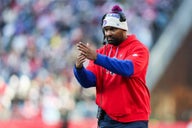
GO DEEPER
Mayo, Pierce latest one-and-done NFL head coaches after Pats, Raiders firings
Mayo’s faults reportedly included an inability to establish a strong sense of discipline, accountability and credibility with players while trying to institute his version of The Patriot Way and replace Belichick, whose 24-season reign included six Super Bowl wins. But who’s inevitably to blame for Mayo’s struggle to gain his footing? The 38-year-old, who had only five seasons of experience as a position coach and none as a coordinator? Or the man who entrusted him with restoring a deteriorated roster to the contender ranks overnight with a first-year general manager and an inexperienced coaching staff?
Pierce certainly infused the Raiders with life in 2023 when he took over for a fired Josh McDaniels, and the linebackers coach-turned-interim head coach gained popularity with veterans, who lobbied for a promotion. But this season, Pierce proved woefully inept at executing crucial decisions in the chess match that is an NFL game. But is that the fault of Pierce, who had never called plays in any capacity in the NFL, or Raiders owner Mark Davis, who overlooked shortcomings and decided to appease a locker room rather than ensure the leader of his team actually met very basic qualifications?
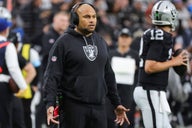
GO DEEPER
What went wrong with the Raiders and Antonio Pierce: A bad staff, QB problems and an unhappy WR
Carthon spent big in free agency last spring in hopes that veteran playmakers would help expedite the rebuilding process of a roster that featured project players at many key positions, including quarterback. And his hand-picked head coach, Callahan, struggled to blend talent and coax the Titans towards a quick turnaround. But is Carthon to blame for the aggressive approach, or owner Amy Adams Strunk, who has proved impatient and impulsive? Strunk first fired respected GM Jon Robinson in 2022, then hired Carthon to work with coach Mike Vrabel even though the two shared different philosophies. Then she fired Vrabel (a hot candidate this offseason) and promoted Carthon before then elevating assistant GM Chad Brinker above him to president of football operations. This all happened while stressing the importance of a quick turnaround to ensure the Titans open their new stadium in 2027 to sellout crowds.
Advertisement
Quick hooks are not new to the NFL, where the average head coach or general manager tenure lasts just three years. (And are often even shorter for coaches and executives of color, as the firings of Carthon, Mayo and Pierce reminded us, again.) Finger-pointing and blame-shifting are common. Accountability often applies to everyone except for the owners who made poor hires, or failed to provide the support and resources necessary for the leaders of their teams to achieve success.
Kraft, Davis and Strunk, like many owners before them, have fallen into the trap of trying to catch lightning in a bottle. But in this league, success rarely comes without struggle. There’s no promised land without a wilderness.
You would think Kraft understood this. Perhaps he forgot about Belichick’s 5-11 first season with New England, or that Belichick had one winning season in six tries as coach of the Cleveland Browns. Maybe he got spoiled by Tom Brady’s magic and forgot about all of the quality drafts Belichick used to repeatedly fortify those championship rosters. Now you would be hard-pressed to find many players on the Patriots’ roster, aside from quarterback Drake Maye, who would start for another NFL team.
Kraft this week acknowledged in his news conference that he put Mayo in an impossible situation. Kraft didn’t, however, admit to glossing right over all of his deficiencies and also failing to create a plan to develop the coach along with his team, once his initial plan for a successful succession went awry.
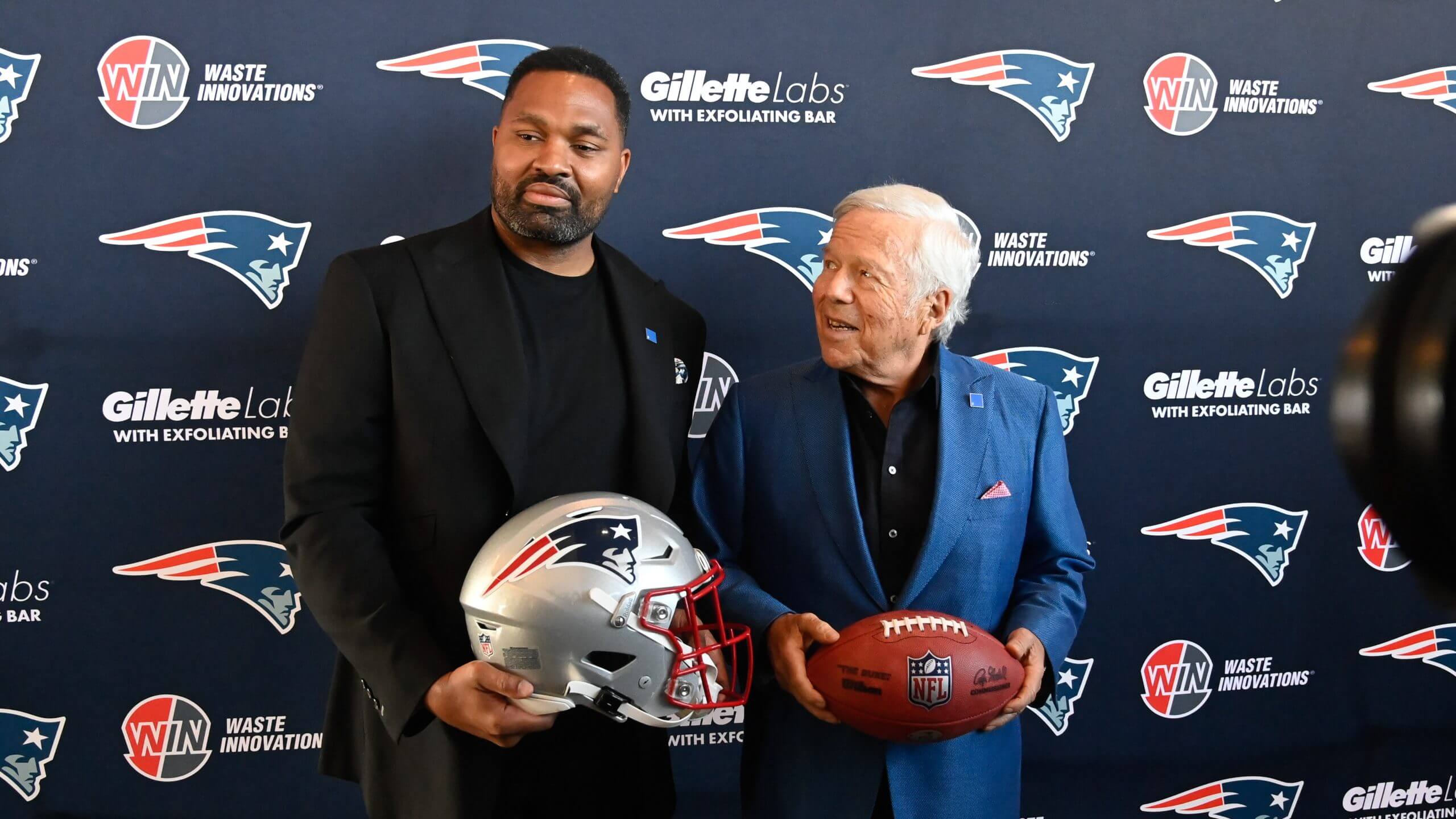
Robert Kraft had high hopes Jerod Mayo, a former Patriots player, would succeed as head coach. (Eric Canha / Imagn Images)
It’s fine that Kraft liked and respected Mayo. It’s great that the owner saw potential in the player-turned-assistant. But if he really wanted Mayo to have the best chance of succeeding in his first stint as an NFL head coach, Kraft should have endured another season of roster restoration under Belichick, found mentorship from others for Mayo, and then made the move to him. A more experienced general manager this season also could have helped Mayo, who struggled to assemble a quality staff of veteran assistants because he had so small a network in a league where relationships are everything.
But after two-plus decades of winning, and with shiny options available on the coaching market, Kraft gave Mayo the hook rather than go through more growing pains.
Davis is paying for a similar gamble. He made the mistake of hiring the raw Pierce two years after he botched another interim head-coaching situation. In 2021, after the in-season firing of Jon Gruden, longtime special teams coordinator Rich Bisaccia guided the Raiders to a playoff appearance. But rather than reward the 22-year NFL coaching veteran, who boasted great knowledge of all three phases of the game and strong talent evaluation and leadership skills, Davis pursued the sexier pick: New England’s Josh McDaniel. McDaniel wound up being a disaster, and Davis regretted not hiring Bisaccia.
Advertisement
Remorse over that situation likely factored into the decision to stick with Pierce, even though his experience paled in comparison to Bisaccia’s. Like Kraft with Mayo, Davis ignored that Pierce still needed to grow as a coach in key areas and gave him a roster devoid of top-level talent — then expected miracles.
And patience certainly remains lacking in Nashville, where Strunk — who declined to speak to reporters after Vrabel’s firing last winter and again this week after Carthon’s firing — has yet to exhibit an understanding of all that goes into rebuilding a team. Rather than foster a winning culture, her approaches continue to fuel division and a lack of trust among top officials.
Under Strunk, controlling owner since 2015, the Titans have struggled to figure out how to conduct their rebuild. The Titans hired Carthon because of his extensive track record of identifying young talent and a belief in building through the draft. But Carthon felt pressure to swing big on free agents rather than build methodically through the draft, and Strunk fired him after the Titans failed to deliver a rapid turnaround similar to that of AFC South-rival Houston the year before. She ignored that Texans GM Nick Caserio used three years of draft-based building to fortify a roster around 2023 rookie of the year C.J. Stroud, then sprinkled in high-profile free agents. The turnaround didn’t just happen overnight in Houston.
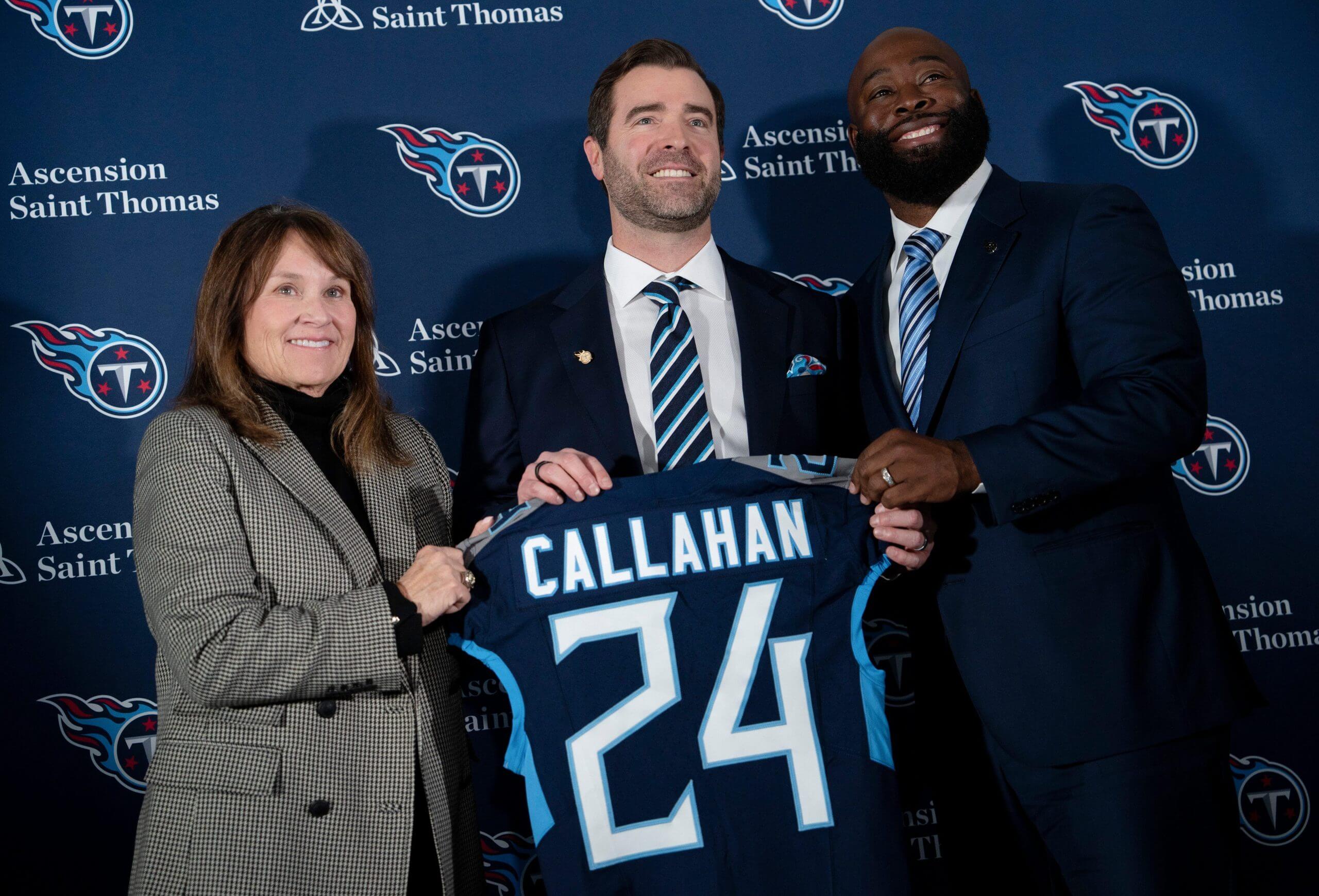
The Amy Adams Strunk-Brian-Callahan-Ran Carthon collaboration lasted less than a year. (Denny Simmons / The Tennessean / USA Today Network via Imagn Images)
Many NFL teams use the L.A. Rams as the example of the franchise resurrection they aspire to achieve. Find a young, creative head coach in the vein of Sean McVay, immediately return to the playoffs and compete for Super Bowls a couple years later. Simple, right?
Wrong. McVay inherited a roster that general manager Les Snead, over the course of five losing seasons, had toiled on and stocked full of early draft picks before hiring McVay in 2017. The two have two Super Bowl appearances, one Lombardi Trophy and six playoff berths in eight seasons because they share a great understanding of the type of players who best fit their system, and because of the patience afforded them after a 5-12 2022 campaign.
Sustained success takes time, and it’s impossible to build a strong foundation when the architects and foremen and their approaches change every couple of years.
In the coming weeks, six teams — the Patriots, Raiders, Jaguars, Jets, Bears and Saints — will hire new head coaches. (The Bears are seeking their sixth full-time coach in the last 20 years and the Jets their seventh. The Jets and Titans will be hiring their sixth general manager of the last two decades.) The league office each season devotes resources to educating and developing coaches and talent evaluators with aspirations of leading their own teams. But those doing the hiring need education just as badly.
Advertisement
Without a doubt, owners will continue to make the mistake of developing a crush on and then hiring candidates who seem attractive on the surface but actually are poor fits for the jobs. If they are not given proper support, early struggles will again lead to wandering eyes by their bosses. The scapegoats will get kicked to the curb and the carousels will spin once again.
(Top photo of Antonio Pierce: Chris Unger / Getty Images)
This post was originally published on this site be sure to check out more of their content.




